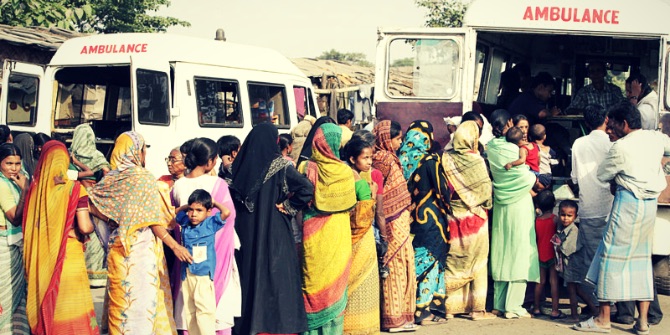Ruth Kattumuri argues that young South Asians are uniquely positioned to take control of their futures, despite the region’s challenges. This post first appeared on the British Council’s Voices blog.
Among the world’s nearly seven billion people, 1.7 billion live in South Asia. By 2050, that number is expected to rise to 2.4 billion people. One fifth of South Asia’s population is aged between 15 to 24 years old. India alone has about 200 million young people in this age group. This decade sees the largest number of young people ever to transition into adulthood in South Asia.
Things in South Asia are getting better
South Asia’s GDP growth has almost doubled in the last 25 years. The region’s development indicators are better than they have been in the last 50 years. Bhutan (0.54), Maldives (0.69) and India (0.55) are now classified as middle-income countries, while Sri Lanka (0.72) is classified as a high-income country (Human Development Index 2013; HDI is based on life expectancy, education, standard of living, etc.). There are improvements in HDI for Pakistan (0.52) and Bangladesh (0.52), but growth is still low in Nepal (0.46) and Afghanistan (0.37).
The urban young in South Asia have better access to education and career opportunities. Their parents also have a greater ability to support and invest in the higher aspirations of their children. A growing number of students can now afford to pursue undergraduate education in developed countries.
Meanwhile, rural youth also have better access to education and opportunities than ever before, and their parents want to support their upwardly mobile aspirations. Girls in villages in poorer states in India are now being sent to school, as bridegrooms have started asking for educated girls as wives. While the literacy rate for young women (73 per cent) in South Asia is still lower than that for young men (86 per cent), the gap is getting narrower.
In South Asia up to 70 per cent of young people live in rural areas, with half of the young labour force working in agriculture. Agriculture is a key source of income, particularly in the region’s poorer countries. Employment and livelihood programmes, such as microfinance projects, are trying to diversify opportunities in the countryside. Technology, which provided employment for urban youth during the 1980s and ’90s, is one way to generate job opportunities for rural young people.
The region still faces big challenges: Not enough teachers or jobs
To make the most of a growing population of working age, the demand and supply of skills and labour must be managed carefully. There are policies to give more people access to education, but putting effective education and skills programmes in place remains a challenge. One major constraint is the shortage of capable teachers.
The share of the working-age population in South Asia is predicted to grow for another two or three decades. However, young adults account for half of the region’s unemployed, and are six times more likely to be jobless than older people, according to the World Bank. A lack of job opportunities for young people could slow down economic growth.
Youth unemployment rose by half a percentage point between 2008 and 2009, and by a further 1.1 percentage point between 2009 and 2010 (Global Employment Trends, ILO 2012). There’s also a large gender gap in the young workforce. The amount of women working in South Asia continues to be driven not only by economic conditions, literacy and public policies, but also by societal values and cultural norms.
What to do?
These young people need better opportunities. Governments are trying to play their part, but meeting young South Asians’ needs and aspirations requires engagement across private and non-governmental sectors too. Public-private partnerships and social entrepreneurship programmes may also help. And the changing demographics in other parts of the world, where ageing populations need social support and health care, could present job opportunities for South Asia’s young people. Finally, technological advancements and faster channels of communication provide young South Asians with the tools to make the most of their opportunities and shape a better future for themselves.
About the Author
Dr Ruth Kattumuri is Co-Director of the LSE Asia Research Centre and India Observatory.
Photo credit: Trocaire under Creative Commons licence via Flickr.








